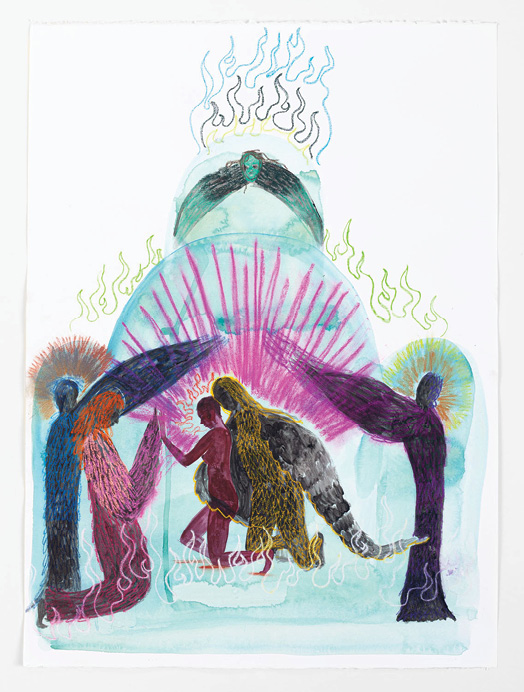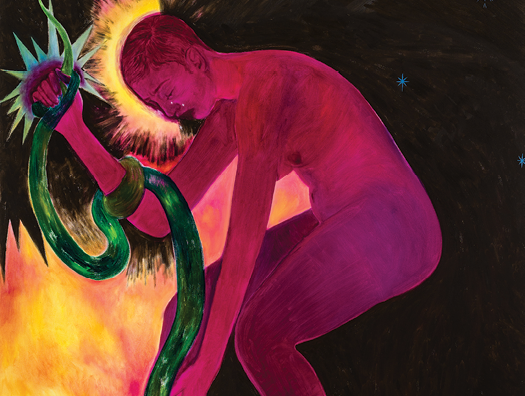References to narrations from the Old and New Testaments are hard to miss in the paintings of Naudline Pierre, as the fabulist spiritualism of her compositions presents an iconography of winged beings, gardens, serpents and sunrise convocations. More than one work even takes on the specific format of Renaissance altarpiece triptychs. Angel-like beings rise, fall, float and also gather together to kneel as if in prayer. Striking schematic beams of light indicate the heavens and the elements of earth, air and fire. Pierre’s own representational style further channels, in some ways, the pre-Raphaelite stylizations of allegorical figures, forced perspective and flattened pictorial space.
Scenes unfold that evoke parables of ritual gathering, annunciation, revelation, vision and rapture. In The Affliction of Love ( all works 2019) the female figure nurses a bite from a coiling serpent. In Hold On, Hold Tight, a small tribe has gathered to witness a baptism or interment. The mood is solemn but not emotional; all that’s made clear is that whatever is happening is important for all involved. Love, prayer and prophecy make repeated appearances in both scenes and titles, but despite the church-like qualities of the work the sensibility remains satisfyingly pagan.

Naudline Pierre, Meet Me at the Altar, 2019, courtesy of the artist and Shulamit Nazarian, Los Angeles
But all of this is a framework for a storyline that is not entirely culled from external religious practices, but rather from a more inward-looking, personal mythology based on a character representing the artist herself—her own experiences, inner life, private spirituality, and public identity and responsibilities. By grafting a realm of earthly feminine power and bodily forces onto an armature of both religion and art history, Pierre is inserting herself and her own humanity into those dominant narratives, as well as recontextualizing their significance, both in the name of a contemporary woman of color and inclusion generally.
Not only her figures but her electric, eccentric, nuanced palette serves and furthers this update; in particularly striking works such as Take Great Care and Lest You Fall, the assemblies of deep luminous blood-orange marigold feathers, regal indigo flesh, flooded chartreuse sky and bruised violet-red skin leave no doubt as to the contemporary sensibility of the work. This is no less true of the female and non-
binary gender of the beings and creatures who gather in her tumultuous Edenic scenes. There is not one bearded Blake-ian white guy in sight, and they are not missed.


